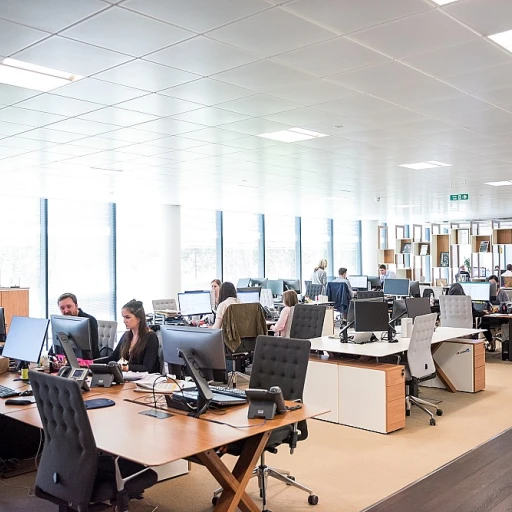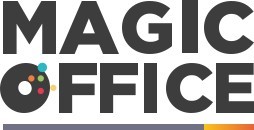
Understanding the Need for Remote Employee Monitoring
Recognizing the Shift in Work Environment
The transition to remote work has necessitated a reevaluation of traditional work environments. The global adaptation to remote modes of operation has led companies worldwide to acknowledge the rising need for effective employee monitoring. This change in landscape presents unique challenges and opportunities, especially concerning productivity and security of sensitive company data. In a remote working setup, employees access company systems from various locations and devices, introducing new security risks. Companies are tasked with ensuring that data security isn't compromised. As teams operate outside the confines of a central office, there is potential for data leaks and breaches, which necessitates robust security measures.Driving Productivity and Accountability
Effective monitoring software can enhance productivity by providing real-time insights into employee activities. By tracking performance and access to resources, organizations can not only ensure tasks are completed efficiently but also identify areas that need improvement. This can be crucial in establishing a culture of accountability and maintaining high standards across the organization. Aside from productivity, there's a critical need for loss prevention strategies that safeguard sensitive data from unauthorized access or unintended exposure. The implementation of such monitoring tools and practices goes beyond surveillance to create a framework where security is upfront and integrated within every layer of the remote work environment. For companies looking to streamline these processes, enhancing efficiency with SharePoint workflow solutions can offer remarkable support. By optimizing workflows, organizations can set a foundation that bolsters remote working efficacy while addressing the nuanced challenges it presents.Balancing Privacy and Monitoring
Finding the Right Balance Between Privacy and Monitoring
In the landscape of remote work, companies face the challenge of maintaining productivity while respecting employee privacy. Striking a proper balance is crucial as remote employees expect a certain level of trust and autonomy in their working environments. Monitoring should be implemented in a way that protects privacy and fosters a sense of security among employees.
One key factor in achieving this balance is the transparency of employee monitoring policies. Organizations should ensure that their privacy policies clearly outline how monitoring will be conducted, what data will be collected, and for what purposes it will be used. Ensuring open communication regarding monitoring practices can reduce discomfort and build trust among employees working remotely.
Moreover, the deployment of monitoring software should focus on tracking productivity while minimizing excessive intrusion. Companies can use software that aggregates data on remote employees' devices without accessing sensitive personal information. It’s essential to configure monitoring tools to emphasize productivity metrics without over-tracking minute details that could lead to privacy concerns.
Providing adequate training and resources on data security can also enhance the perception of remote work monitoring as a means to protect the company and its employees from security risks. By emphasizing that monitoring strategies are in place to prevent data leaks and ensure data protection, organizations can promote a security-first culture that prioritizes both productivity and privacy.
To further support this balance, companies can consider implementing custom rules such as do-not-disturb signs in their monitoring approach, tailored to the needs of their remote workers. This strategy not only enhances productivity but also respects personal privacy, allowing employees to focus on work during specified hours without unnecessary interruptions. For more on this topic, you can explore how custom do-not-disturb signs can effectively boost productivity in remote working settings: Enhancing productivity with custom do-not-disturb signs.
Tools and Technologies for Effective Monitoring
Leveraging Advanced Tools for Enhanced Monitoring
In the realm of remote work, ensuring productivity and data security is paramount. To achieve this, companies are increasingly turning to sophisticated tools and technologies designed for effective employee monitoring. These tools not only help in tracking productivity but also play a crucial role in safeguarding sensitive data.
One of the primary concerns for companies is the potential for data breaches and leaks. Monitoring software can provide real-time insights into employee activities, helping security teams identify and mitigate security risks promptly. These tools can track various metrics such as time spent on tasks, application usage, and even detect unusual patterns that might indicate a security threat.
Key Features of Monitoring Software
- Real-Time Tracking: Enables companies to monitor employees working remotely, ensuring that tasks are completed efficiently and securely.
- Data Protection: Tools often include features for data loss prevention, helping to prevent unauthorized access to sensitive information.
- Access Control: Allows companies to define and enforce policies that restrict access to critical systems and data, reducing the risk of data leaks.
By integrating these technologies, companies can not only enhance productivity but also ensure robust data security. For instance, implementing comprehensive monitoring software can help mitigate the risks associated with remote working by providing a clear overview of employee activities and potential security threats.
For those looking to streamline their monitoring processes, exploring solutions that offer comprehensive features is crucial. Companies can benefit from streamlining appointment and billing approval systems, which can complement monitoring efforts by ensuring that all processes are efficiently managed.
Preventing Data Leaks: Strategies and Best Practices
Implementing Robust Data Security Measures
In the era of remote work, ensuring data security is paramount. Companies must adopt comprehensive strategies to protect sensitive data from potential breaches. One effective approach is to implement multi-layered security protocols. This includes using encryption to safeguard data both at rest and in transit. Encryption ensures that even if data is intercepted, it remains unreadable to unauthorized parties.
Utilizing Advanced Monitoring Software
Monitoring software plays a crucial role in preventing data leaks. By tracking employee activities in real time, companies can quickly identify unusual behavior that may indicate a security risk. This software should be configured to monitor access to sensitive data and alert security teams of any unauthorized attempts. However, it’s important to balance monitoring with privacy to maintain employee trust.
Establishing Clear Data Access Policies
To mitigate security risks, companies should establish clear data access policies. These policies must define who can access what data and under what circumstances. Regular audits should be conducted to ensure compliance with these policies. By limiting access to sensitive data to only those who need it, companies can significantly reduce the risk of data breaches.
Training Employees on Data Protection
Employees working remotely must be trained on best practices for data protection. Regular training sessions can help employees understand the importance of data security and the role they play in preventing data loss. Topics should include recognizing phishing attempts, using secure passwords, and the importance of logging out of devices when not in use.
Implementing Loss Prevention Technologies
Data loss prevention (DLP) technologies are essential tools for any company with remote workers. These technologies can prevent data leaks by blocking the transfer of sensitive data outside the company’s network. DLP solutions can also monitor and control data transfers on removable devices, ensuring that sensitive information does not leave the company’s secure environment.
Legal and Ethical Considerations
Compliance Elements within Employee Monitoring
When implementing employee monitoring, adhering to legal standards and ethical guidelines is paramount. Companies must ensure that their monitoring practices are aligned with laws that protect employee privacy. This can be especially challenging with the diverse array of data protection regulations.- Respecting privacy laws: It's important for companies to understand the privacy laws in different jurisdictions, particularly those concerning remote work and data security. These laws govern how personal data is collected, processed, and stored.
- Clear communication and transparency: Employees should have a clear understanding of the monitoring policies in place. Full disclosure helps in building trust and ensuring that employees are comfortable with the monitoring mechanisms.
- Define access levels: Only authorized personnel should have access to monitoring data. This helps in minimizing security risks and prevents potential data breaches.
- Implement robust policies: Establishing clear policies detailing the appropriate use of monitoring software and devices is crucial. These policies should clearly define what constitutes acceptable monitoring practices.
- Regular audits and assessments: Regularly auditing the monitoring systems to ensure compliance with both legal and internal policies can help prevent data leaks and other security incidents.
- Training and education: Educate employees about privacy, the importance of data security, and how monitoring contributes to these goals. This can aid in creating a culture of security-minded employees.













